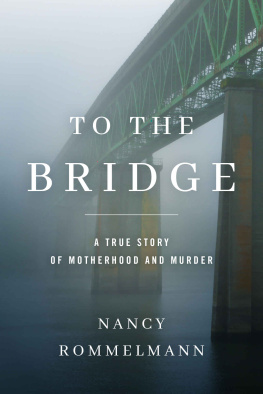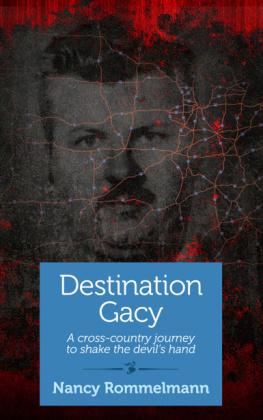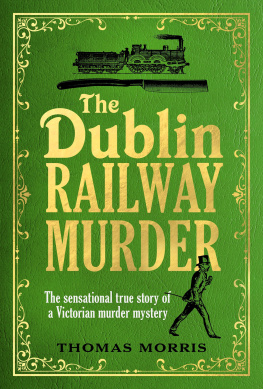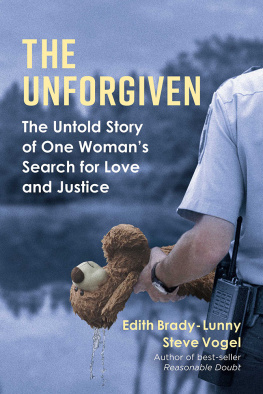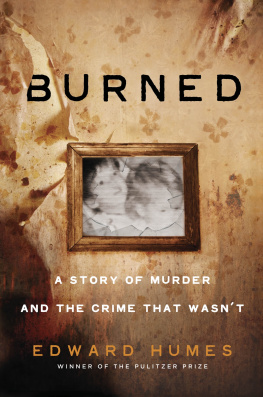PRAISE FOR NANCY ROMMELMANN
How do you understand the not understandable and forgive the unforgivable? So asks one of the characters in this clear-eyed investigation into something we all turn away from. To the Bridge is a tour-de-force of both journalism and compassion, in the lineage of such masterpieces as In Cold Blood and The Executioners Song . Word by word, sentence by sentence, Rommelmanns writing is that good. And so is her heart.
Nick Flynn, PEN/Martha Albrand Awardwinning author of Another Bullshit Night in Suck City
In To the Bridge , Nancy Rommelmann takes what many consider the most unforgivable of crimesa mother set on murdering her own childrenand delivers something thoughtful and provocative: a deeply reported, sensitively told, all-too-relevant tragedy of addiction and codependency, toxic masculinity, and capricious justice. You wont be able to look awaynor should any of us.
Robert Kolker, New York Times bestselling author of Lost Girls: An Unsolved American Mystery

ALSO BY NANCY ROMMELMANN
The Bad Mother
The Queens of Montague Street
Transportation: Stories
Destination Gacy

Text copyright 2018 by Nancy Rommelmann
All rights reserved.
No part of this book may be reproduced, or stored in a retrieval system, or transmitted in any form or by any means, electronic, mechanical, photocopying, recording, or otherwise, without express written permission of the publisher.
Published by Little A, New York
We gratefully acknowledge permission from the following:
Excerpt from Day Out of Days: Stories , by Sam Shepard, copyright 2010 by Sam Shepard. Used by permission of Alfred A. Knopf, an imprint of the Knopf Doubleday Publishing Group, a division of Penguin Random House LLC. All rights reserved.
Excerpt from Netherland: A Novel , by Joseph ONeill, copyright 2008 by Joseph ONeill. Used by permission of Alfred A. Knopf, an imprint of the Knopf Doubleday Publishing Group, a division of Penguin Random House LLC. All rights reserved.
Excerpt from Iphigenia in Forest Hills , by Janet Malcolm, copyright 2011 by Janet Malcolm. Used by permission of Yale University Press.
Excerpt from Down City , by Leah Carroll, copyright 2017 by Leah Carroll. Used by permission of Hachette Book Group USA.
www.apub.com
Amazon, the Amazon logo, and Little A are trademarks of Amazon.com, Inc., or its affiliates.
ISBN-13: 9781542048422 (hardcover)
ISBN-10: 1542048427 (hardcover)
ISBN-13: 9781542048415 (paperback)
ISBN-10: 1542048419 (paperback)
Cover design by Angela Moody
First edition
To Gavin, Trinity, and Eldon, for what they did and did not live through
To Din, for everything
CONTENTS
It is easyterribly easyto shake a mans faith in himself. To take advantage of that to break a mans spirit is devils work.
George Bernard Shaw, Candida
How did fear and respect become synonymous? Whenever theres a murder here, the suspect always says, Maybe now theyll show a little respect.
Sam Shepard, Day Out of Days
Who has the courage to set right those misperceptions that bring us love?
Joseph ONeill, Netherland
AUTHORS NOTE
T his is a work of reported nonfiction. All scenes are reconstructed from interviews, published reports, court documents, police and correctional facility files, witnessed accounts, or my own experience. Dialogue has been taken from audio recordings, handwritten notes, interviews, emails, phone calls, and other direct forms of contact. I have consulted Amanda Stott-Smiths own writing, as well as the letters, emails, and documentation of family members, friends, legal teams, and others. People in this book are called by their real names, with the exceptions of two who did not wish to be identified, one of whom is given the pseudonym Molly, as noted in the text.
PROLOGUE
T he breakup of Amanda Stott-Smith and Jason Smiths seven-year marriage did not seem out of the ordinary. They were arguing about money and stressed about the kids. Jason moved out of the family home in Tualatin, Oregonthirteen miles southwest of Portlandin June 2008. Amanda stayed in the house, which one of her college classmates later described as the color of throw-up, with the couples nearly four-year-old son, Eldon; six-year-old daughter, Trinity; and Gavin, Amandas eleven-year-old son from a previous relationship. Jason moved in with a buddy for the summer, and by fall he was living in one of his mothers rental properties in Eugene. As he had throughout his marriage to Amanda, Jason relied on his mother, Christine Duncan, to pay for what he could not. She helped with the rent on the Tualatin house and made sure the children were cared for when they visited their father. She took the family to Southern California for Thanksgiving. She saw her daughter-in-laws increasingly poor mothering skills as reason why Jason should pursue custody of the two younger children in the divorce.
It was also not out of the ordinary, at the start of the new American century, when following her arrest for dropping Eldon and Trinity from a Portland bridge just after one oclock on the morning of May 23, 2009, Amanda would tell detectives, several times, that she did not want to be on television.
The request for anonymity proved impossible to honor. Amandas picture ran on the front pages of the Portland Tribune and Oregonian newspapers. Advocates for capital punishment argued that mothers who kill their children are the reason the state has the death penalty. Those who saw mental illness as a factor called for more funding of social programs, and a city councilman told fellow council members that he became committed to finding money in the budget for a new rescue boat after he listened to the 911 tapes, [and] could hear the little girl screaming, Dont, Mommy, dont. That this was not what Trinity or any child had screamed on tape did not stop the Oregonian from running the quote.
Most people found what Amanda had done unfathomable. Unpacking the reasons why a mother kills her children can scare people, and spectators at Amandas sentencing in April 2010 may have felt the burden lifted when the judge called Amandas actions truly incomprehensible. It was a sentiment echoed by Jason. During sentencing, he told Amanda, who would not meet his eye, The nature of this crime will never be known to me, and no thoughts of the murder will ever make sense to anyone.
If Amanda briefly cried that day in court, she for the most part maintained the half smile I had seen her wear at previous court dates, one that could be described as placid, or bemused, or frozen, or as a latent tell of the criminal mind. The smile might have been locked in place by the antidepressants she both had and had not been taking since Jason left, or by bewilderment. It made sense that Amanda would be bewildered by where she found herself, at the defense table during her conviction for the murder of her son and attempted murder of her daughter, her ex-husband sitting beside the woman he had married earlier that week, giving him the opportunity to say, for the TV cameras and thus posterity, that Trinity now had a new mother she can love. Amanda Stott-Smiths identity had been pinned to being her childrens mother, to being Jasons wife. Hearing how she had lost it all and would pay for that loss would have been stultifying, and in addition to whatever else it was, the half smile seemed like a way for Amanda to cover her mortification.
Whether Amanda had lost her identity before or after she dropped the children from the bridge was not addressed that day in court. Truly incomprehensible... put a period on curiosity. If the judge declared examination futile, if Jason believed the murder of his son would never make sense to anyone, then spectators could reasonably conclude they were off the hook, that incuriosity was perhaps kindlier, safer for all involved. When given the opportunity to stand and tell Amanda how her actions had undone their lives, only Jason and two of the perhaps seventy other people in the courtroom chose to do so. Jasons mother read a poem written by Eldons preschool teacher; Gavins stepmother, through tears, said, I pray now that this part of the story is completed.
Next page
